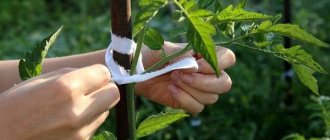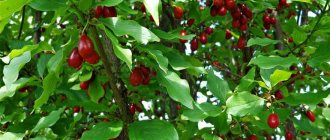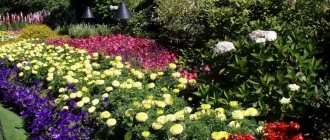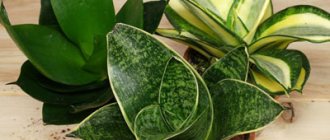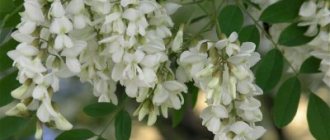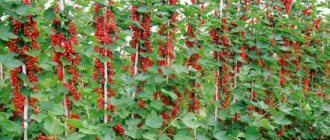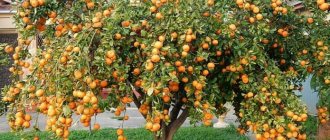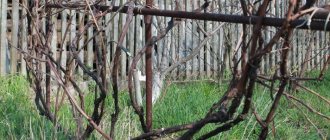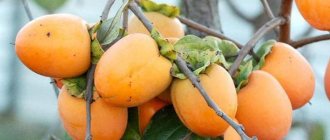- Clothespins and clips for fastening
The need for currant garter usually arises four years after planting the seedling in the soil. By that time, the plant has time to form at least 20 shoots of different ages. The side branches begin to touch the soil surface, which damages both the shoots themselves and the berries. Tying currant bushes completely solves this problem.
Do I need to tie up currant bushes?
Installing support for the branches of a currant bush is an important part of care. The lower shoots of the plant are close to the surface of the earth; during fruiting, under the weight of the berries, they fall even lower. This can lead to rotting of part of the crop, increasing the risk of infection with fungal infections. Staking of branches is also required for the winter, especially when grown in cold regions. Proper shelter of shoots allows you to avoid hypothermia and death due to frost.
An unkempt shrub is more difficult to care for - it is impossible to carry out high-quality work with the soil and replenish the mulch layer as it is depleted.
Advantages and disadvantages of the procedure
The use of fencing or garter is widely used in practical gardening. The procedure has a number of advantages:
- the lower branches do not touch the ground;
- supporting the bush prevents branches from growing, which simplifies pruning;
- the berries do not rot during the offering period, the purity of the harvest is maintained;
- it becomes possible to give the necessary shape to maintain decorativeness.
Proper strengthening of bushes improves the appearance of the site. Plants look well-groomed and neat.
The procedure has the only drawback - the need to replace the material when using wooden structures. With a large planting size, it takes a lot of time to regularly replace the garters as the currants grow.
Age of currant garter
As experienced gardeners say, currant bushes and more can be tied up immediately after planting. Since the seedling is planted at an angle, in order for its root system and its foliage to better form. That is why it is necessary to immediately fix its position.
It is necessary to tie up the branches of the bush, because they can break under the heavy load of future fruits. You can also plant other plants around the support that will decorate your site and will protect you from all kinds of pests.
DIY strengthening methods
You can handle installing a support for a currant bush yourself. The strengthening design does not have complex elements; if you have the necessary tools and materials, installation takes several hours. To form simple methods for gartering branches, you may need boards, ropes, metal supports and plastic pipes, which it is advisable to purchase in advance. When choosing a support option, you need to take into account the age of the plants, the number of bushes in the plots and the planting pattern.
On the trellis
The method is suitable for red and white currant bushes, which have more flexible and thin shoots, unlike black varieties. Step-by-step algorithm:
- Drive iron or wooden stakes 1.5 to 2 m long into the corners of a row of bushes. Tighten them with a cord.
- Place the fruiting shoots on the installed garters, carefully secure them with thin pieces of fabric.
New trellis strings can be added as the plant grows. It is not recommended to use wire, as it can damage the bark of the branches. The advantage of this method is the uniform distribution of bunches of berries on the garter during the ripening of the crop.
To extend the service life of the trellis supports, the ground part of the stakes can be treated with an antiseptic. Some gardeners additionally place river sand in the hole or cauterize the sharpened area.
For a single frame
The optimal method of support for bushes located separately from each other. Suitable for gardens with a small area and different varieties, such as Sibilla, Dobrynya. To create the structure, drive 4 pegs into the ground around the perimeter of the plant. Tighten the supports together with strips of boards 5-7 cm wide. Strengthen the structure with nails or self-tapping screws. After installing a single frame, it is recommended to carry out formative pruning of the bush, loosen the soil in the area of the trunk circle, and lay mulch.
On a triangular support
A type of strengthening a bush on a single frame. The main difference between this method is that the structure consists of three support points. For installation, drive stakes in the center and in two equidistant places. Secure them with slats or rope. The result should be an equilateral triangle. This method is suitable for currants planted next to an enclosure, such as a fence or building. At the end of the work, it is important to check that all branches lie evenly on the support strips. If necessary, prune overgrown, old shoots. Find out about the best varieties of currants in this article.
On a pipe support
A simple method of tying up fruiting shoots. Its advantage is that the materials used in the design have a long service life, which simplifies the maintenance of the planting. The support is made as follows: guide stakes up to 2 m high are driven around the bush. A plastic (PVC) or copper pipe, which can be purchased at a plumbing store, is placed on top of them. It should frame the plant around the circumference, fruiting shoots are placed on top and tied with twine or cloth. It is recommended to remove the lower branches - this allows access to the near-trunk area of the circle for subsequent soil care.
To avoid cracks and chips in the PVC pipe, you can use a torch while bending. With its help, you can strengthen the joints and give the material any desired shape.
On the standard
This method of supporting a bush is rarely used in practice; it is usually used in industrial gardening when growing black and green currants. The main task is to leave the main trunk and only fruit-bearing shoots, so pruning is a mandatory preparatory procedure. After shaping, a support peg with a length of 1 m is installed closer to the center of the plant. Tie the plant to it using pieces of fabric, and mulch the soil generously.
The advantage of the method is that the lower branches grow for a long time and gradually, which simplifies care for the next season, and the plant looks very decorative.
With this method, there is a possibility of damage to the currants in strong winds, so this method is not suitable for growing crops in open areas. Find out how to treat currants from terry in this material.
Temporary or seasonal
To perform such a garter, you will need to prepare several wooden pegs, a hammer and a simple rope.
The stakes are driven into the soil, the branches are first tightly but neatly gathered into a bunch.
The height of the protruding part of the base depends on the size of the bush; rope braids should secure the shoots in such a way as to prevent them from being damaged and to prevent the berries from touching the ground.
The pegs are wrapped with rope or a wide strap. Now the branches will always stand vertically or at a slight angle.
Another method of attaching a standard type of bush is to install one wooden peg when forming a standard. The main crown of the plant is formed on one main trunk, the lower shoots are cut out. Therefore, here the method of attachment is similar to tying the trunks of young trees to a planting stake. The upper part and the trunk circle are illuminated by the sun and ventilated. This technique makes the plant unstable in strong gusts of wind and will require mandatory covering of the bushes for the winter. Find out about the characteristics and description of the Zaporozhye Kishmish grape variety here.
Permanent
Such fastenings of shrubs include all kinds of trellises, the manufacture of plastic trellises or the installation of stationary supports for the Early Sweet, Red Altai and other varieties of currant bushes. All kinds of industrial or homemade plant holders are popular among gardeners:
- Plastic frame. Lightweight and inexpensive holders allow you to quickly and easily equip an area with supports for berry shoots. But when purchasing, you should not buy cheap types of supports - these are low-quality or defective products that will break in the first season. The disadvantage of plastic is its fragility, especially in winter. A frozen support can break even with a light touch.
- Metal holders. These are durable structures, but over time traces of rust appear on the metal, so they will need to be tinted. The main advantage of such supports is their high level of strength and the ability to withstand significant loads under the weight of berries on the shoots with minimal thickness.
But expensive types of frames are made from materials that do not lose ductility and strength when exposed to cold. Such composite materials are used in various industries.
As an additional decoration, such devices are decorated with forged parts, turning simple supports into an element of landscape design. The cost of steel supports is more expensive than their plastic counterparts, but their long service life makes the choice of a steel frame justified.
To secure rows of bushes of any variety of currants, including pink Dutch currants, it is recommended to use decorative hedges made of plastic or metal, as well as install long trellises that are short in height. In any case, the task of permanent supports is similar to temporary ones. As the bush grows, the shoots will have to be fixed at different heights. To do this, use the installation of several tiers of support posts and special ties or clips, with the help of which the shoots are secured to the support. This allows you to avoid damage and abrasion of the bark during the wind and as the bushes grow. This material will tell you about the features of growing Golden currants.
How to tie up a currant bush - options
Proper tying of branches allows you to avoid broken shoots and other mechanical damage. They often appear when using dense materials - synthetic ropes, wire. The bush must be secured in such a way that space is freed up from below for soil care, and the fruit-bearing branches are within reach of the hands, which simplifies the picking of berries. To attach the currants to the support, it is best to use twine, twine or scraps of fabric.
Using pegs
A temporary method of tying currants is recommended for the first and second years of plant growth, then it is advisable to install a more reliable structure. Pre-sharpened stakes are installed along the perimeter of the bush and tied with slats or rope. Then the upper shoots are placed directly on them, and the lower ones are cut off. This is enough to give shape and decorativeness to the bush. Against the backdrop of a strong wind or during a snowy winter, shoots can break or be damaged, so all parts of the bush are tied up for the winter.
Installing a strong and reliable structure is justified only with a large bush with a large volume of berries. A temporary garter can be used until the moment of active fruiting of currants.
Ropes
The traditional method of tying all medium-sized garden bushes. Rope is considered the best material for working with branches, since it does not disrupt the circulation of plant sap and does not lead to mechanical damage. The best choice is twine or twine of medium diameter.
Before starting work, carry out sanitary pruning. Gather the fruiting branches into small bunches and tie them in the center. After this, they can be laid on a pre-installed support or left as is, depending on the age of the bush and the volume of the ovaries. Find out why currants turn yellow here.
It is not recommended to squeeze the knot tightly to avoid deformation of the shoots.
Advantages and disadvantages of strengthening bushes
Shrub garter has some advantages and disadvantages that you should familiarize yourself with in advance. The main advantages include the following:
- Protection against the appearance of fungal diseases, the causative agents of which are found in the upper layers of the soil. Even careful pinching of bushes does not protect them from contact with the soil. The most effective way to prevent currants from contacting the ground is with a garter. Bushes tied to supports get sick several times less often .
- Simplifying access to berries. Harvesting from untied bushes is not easy. Tied branches do not bend to the ground and therefore picking ripe berries is much easier.
- Wind protection. It is no secret that currant branches can break due to gusts of wind. If you tie a bush to a support, its branches will not break even in strong winds.
The only serious disadvantage of growing tied currants is that you need to spend a lot of time creating and installing a support.
Purchased fencing
In gardening stores you can find a wide range of devices for supporting fruit and berry bushes. They have a primitive design, are easy to install and do not require frequent replacement. Made from light alloys of metal, PVC or wood. Combined materials are used more often, which increases the functionality of the product. Popular options for purchased fencing are ready-made frames and plastic stands. When choosing a specific model, you should pay attention to the country of the manufacturer, reviews of gardeners about real experience of use.
Metal frame
It is usually made from low quality steel and is powder coated to resist corrosion. It can be painted in different colors, which increases its decorative effect on the site. Wrought iron models are especially popular and fit into any landscape design. Consists of several support posts, a soil compactor, a sleeve for a garter and protective caps. Advantages of the modern model:
- beautiful appearance;
- durability in operation;
- ability to withstand heavy loads;
- simple installation;
- Possibility of use in winter.
When purchasing a frame for currants, pay attention to the quality of the seams. Welding on them must be uniform; burrs and voids are not allowed.
Anti-corrosion coating provides reliable protection against rust. With constant use, the decorative effect of the product can last up to 15 years.
Plastic stands
Supports for branches made of plastic have a low cost, unlike their metal counterparts. They are easy to install and can withstand heavy weights. Recommended for red and white currants with lighter berry bunches. Popular models are “Currant”, “Pyramid”, “Cascade”, “Rose”. These are universal designs suitable for branched garden plants. Advantages of plastic stands:
- aesthetic appearance;
- quick assembly;
- light weight but good rigidity;
- versatility;
- Possibility of dismantling without loss of quality.
Broken parts of a structure cannot be properly repaired; unlike metal, they cannot be digested.
Among the disadvantages, deflection and deformation of the material are noted when working with productive varieties of fruit and berry crops (Izyumnaya, Titania).
Design options
Today on sale you can find various stands for bushes of fruit and berry plants, although they appeared in this form not so long ago. Basically, gardeners have been using homemade fences made from different materials for many years. Some models of bush holders made by non-professionals are simple and unpretentious, not requiring much time and effort to construct. Making a support for currants with your own hands is not very problematic.
Of course, you can buy such gardening tools, but sometimes there is no point in spending extra money when an excellent frame can be made at home. The main thing is to decide from all the variety of possible options which model will be the best for the existing currant bushes.
- A fence made of pegs. Around the bush you need to hammer four pegs (more are possible) so that about half a meter of their length remains above the ground. Any available material is tied to the first support: wire, twine, rope, thick fishing line.
- Branch holder. Four thick 70 cm long spears are dug in around the perimeter of the currant bush. The base of the support can be replaced with thick branches. Even branches are laid on top. In appearance, this design should resemble a wicker fence.
- Metal fencing is the most durable and reliable device for supporting berry bushes. Making such a frame will not be difficult. You need to take 4 steel pipes, drive them around the bush, plug the upper holes with a fitting so that moisture and foreign debris do not get inside. The walls of the structure can be built from what is available.
- Supports for bushes made of plastic pipes. To create a fence you will need fiberglass reinforcement, plastic pipes, and pipe plugs. This design is beautiful, durable, and most importantly, will last for many years. The manufacturing process includes the following steps: 7 racks of 50 cm in length need to be cut from pipes;
- drill a through hole in each pipe at a distance of 4–5 cm from the top;
- insert fiberglass reinforcement through the holes;
- hammer the pipes evenly around the perimeter of the bush;
- align the reinforcement, close its ends;
- install plugs on all racks.
- Fence made of metal-plastic pipes. A simple but reliable currant stand can be easily made from metal-plastic pipes. To make the frame you will need the following materials: metal-plastic pipes, hose, screws, wooden pegs, screwdriver, penknife, hammer. The manufacturing process should be carried out as follows: two rings of the same diameter are constructed from the main pipe;
- the ends of the pipe are connected with a piece of rubber hose, and the pipes should fit tightly into it, not dangle or fly off;
- legs-stands approximately 80 cm high are sawn off from the same pipe; to make the frame stable, three pieces are enough (you can do more);
- all holes in the racks are filled with bushings;
- the first hoop is attached to hammered wooden stakes; it will serve as the top of the support;
- the second circle is fixed to the supports from below.
- Another option for a DIY bush stand involves assembling a garden product without using screws. However, you will need a soldering iron for polypropylene products. To make such a fence, you must perform the following steps: cut two pieces from a metal-plastic pipe and make two hoops from them;
- cut the legs;
- put fittings of suitable size on the legs and solder them with a soldering iron;
- the finished racks are mounted on a metal-plastic pipe;
- the pipe is put on the bush and connected with a rubberized hose;
- For increased stability of the rack, it is advisable to install it on steel pins buried in the soil.
- Wooden fencing. You can make a wooden stand for currants with your own hands. It is worth remembering that all wooden products must be treated with antiseptics, varnished or painted. All these measures extend the life of such a structure. For work you will need a wooden beam and paint and varnish products. The following steps must be completed: 4 pieces of at least 60 cm in length are cut from a wooden beam, one end of each piece is sharpened;
- Four meter boards are cut from the same timber;
- pointed posts are driven in at equal distances (for a more attractive appearance of the product) around the bush, and strips are attached to their upper ends.
In addition to the listed models of supports for currant bushes, craftsmen make frames from car tires, hula hoops for sports, bicycle tubes and other materials that can be found on the farm.
See below for a review of the currant bush holder.
Rules for the procedure
Despite the simplicity of preparing and installing a support for a currant bush, it is important to follow the manufacturing technology. This allows you to avoid mistakes during subsequent pruning and will preserve the health and decorative appearance of fruiting shoots. It is advisable to carry out work only in the fall after harvesting or in the spring before the buds begin to swell, when the plant is dormant. Read why currant branches dry out here.
Preparation of material
Before starting work, prepare all the material depending on the type of structure. To create support and garter for garden shrubs you may need:
- wooden boards or slats measuring 5x5 or 8x8 cm;
- wire, thick fishing line;
- fasteners - nails, screws;
- rope (string or twine);
- PVC pipe with a diameter of 2-3 cm;
- fittings
All the material is easy to find at a hardware store. It is enough to know the number of parts needed to make a particular support.
It is advisable to take fastening material, rope or wire with a reserve. Part of the length will be spent on tying knots and trimming.
Tools
To make a support structure for a currant bush, it is enough to have a minimal set of tools. The basic set consists of:
- hammer;
- an ax or knife for sharpening stakes;
- garden pruner, lopper;
- nippers, scissors.
It is recommended to have a rake and a trident for working with the soil, as well as removing fallen leaves if you are working in the fall. If using long stakes, a shovel may be required to drive the stake firmly into the ground. This link will tell you how to treat currants against aphids and ants.
Installation of supports
Before starting work, the wooden board or slats need to be sharpened from below, treated with an antiseptic, and allowed to dry. Then, using reinforcement or a pin, check the location of the roots to avoid damage. Drive the stakes in with a hammer or small sledgehammer and pull them together.
Installation of support stakes is not difficult even for novice gardeners.
Garter
To tie the shoots together, you need to take them in a small bunch and then tie them approximately in the center. The knot cannot be made very tight; the index finger of an adult should easily pass between the connected branches. Trim off excess material - it can interfere with further care of the plant.
The main mistakes gardeners make when tying currants
People who make supports from scrap materials and tie currant bushes to them often make mistakes. The most common mistakes include:
- Use of low-quality materials. Sometimes people skimp on materials when building a support structure, which causes it to break down quickly.
- Choosing the wrong garters. Do not use natural fabrics that can damage the shoots.
- Pulling tied branches. Sometimes gardeners tie currant branches too tightly. This not only slows down its development, but also leads to drying out of the branch.
- One-time garter. Experts recommend regularly tying up currants as they grow.
Features of a garter for winter shelter
Gartering and installing supports for the winter allows you to avoid hypothermia of currants against the backdrop of frost. For this purpose, in addition to installing the structure for supporting the branches, it is necessary to provide shelter. It is recommended to use burlap, agrofibre or spunbond as a material. They cover the entire bush, especially the lower branches, and then tie it with a rope in a spiral. In cold regions, the bush can be additionally covered with spruce branches. After the procedure, it is important to liberally mulch the trunk area with peat, wood chips or sawdust.
Tie to preserve: currants, hydrangeas, conifers
One of the important measures for preparing the garden for winter is tying the plants to protect them from breaks.
The snow can be heavy and packed, especially if snowfalls alternate with thaws or rain. It happens that a cross-section of a snow cap looks like a layer cake of granular snow and layers of ice. When such a hat puts pressure on a bush, broken branches cannot be avoided. But it’s even worse when plants receive serious damage in the form of fractures.
Faults primarily threaten conifers growing in several trunks. Therefore, at the end of autumn, be sure to tie them with an elastic ribbon (women's tights are suitable for this, and even very good). What needs to be tied? First of all, mountain pines. It is also advisable to tie pyramidal and columnar varieties of pines and junipers. Junipers - so that they do not look disheveled after winter. There is no need to tie thujas, they are not afraid of anything.
As for ornamental shrubs, let’s not forget about tree-like and paniculate hydrangeas. It is also necessary to tie the winged euonymus. If shrubs grow in places where snow falls off the roof, also take care of the dividers.
conclusions
- Gartering a currant bush, unlike tying a tomato in open ground, is required to give the plant a decorative shape, protect the lower branches from contact with the ground and make it easier to care for.
- Available methods of strengthening are on a trellis, a standard, a single frame or a triangular support, the use of pipes.
- You can secure fruiting shoots with stakes and rope. The choice of design and material depends on the age of the bush.
- There are ready-made designs for garden shrubs on sale. For example, a metal frame and plastic stands.
- The main stages of work are preparation of material and tools, installation of supports, garter.
When tying currants
Usually, the currant bush begins to be tied up 3-4 years after planting, because it is at this time that it grows in width and the tall shoots begin to bend down to the ground.
Important! You need to tie up a currant bush in the spring, at the end of April, or in the fall - in the second half of September, when the branches of the plant are flexible.
It is imperative to tie up currants in the following cases:
- the side branches leaned too far towards the ground;
- a large number of berries have formed on the plant;
- currants need winter shelter;
- The growing region experiences strong winds in the autumn-winter period.
Price issue
Today, bush holders can be purchased at very competitive prices. On average, plastic products for one bush will cost 150-300 rubles, depending on the model and company. When choosing a particular stand for a currant bush, you should take into account all its features.
Wooden ready-made frames are more difficult to purchase; they are mainly made to order or made independently at home. They cost no more than 300-400 rubles. The most profitable option for tying is a rope. It is not only very convenient, but also pleases with its price; in addition, it is enough not for one bush, but for several at once.
Properly fencing currant bushes at home will not be difficult at all, especially if you follow the advice of experts. Regardless of what type of plant garter is chosen, the most important thing is to properly lift the branches of the bushes and allow the berries to fully ripen. If properly tied, plants will not be afraid of any fungal or other diseases of viral or bacterial etiology.
A convenient and simple garter for currants is shown in the following video.
As the currant grows, it forms a medium-sized, but very branched bush. Starting from the second year, it is recommended to garter the shoots and install a support nearby. This simplifies regular care, pruning and prevents rotting of berries, leaves and flowers in contact with the ground. A competently and carefully constructed fortification gives the garden a decorative, well-groomed appearance. To form a support, improvised materials are used - ropes, boards or an iron frame, as well as purchased products, for example, plastic stands. During work, you should take into account the age of the plant and the location of the bushes on the site.
Pros of using bush stands
A fence installed for bushes helps solve the following problems:
- The branches of bushes do not lie on the ground. The support prevents plants propagated by liners from growing uncontrollably.
- Berries and fruits do not touch the soil. The harvest will not rot and will always be clean.
- It is more convenient to collect fruits from raised branches.
In addition, the designs of fencing for bushes are simple and can be done with your own hands.
